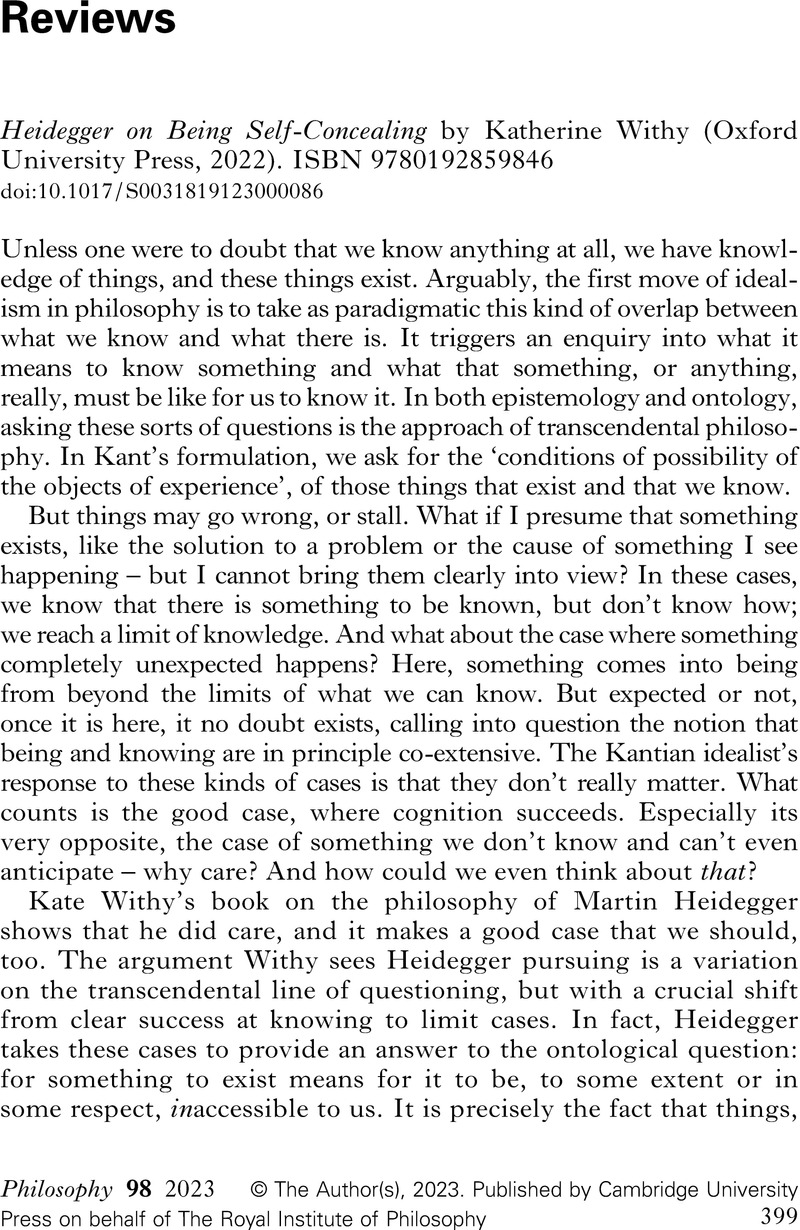No CrossRef data available.
Article contents
Heidegger on Being Self-Concealing by Katherine Withy (Oxford University Press, 2022). ISBN 9780192859846
Review products
Heidegger on Being Self-Concealing by Katherine Withy (Oxford University Press, 2022). ISBN 9780192859846
Published online by Cambridge University Press: 08 May 2023
Abstract
An abstract is not available for this content so a preview has been provided. Please use the Get access link above for information on how to access this content.

Information
- Type
- Review
- Information
- Copyright
- Copyright © The Author(s), 2023. Published by Cambridge University Press on behalf of The Royal Institute of Philosophy


